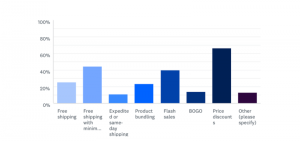— January 8, 2019

B2B companies are in the midst of 2019 business planning—examining the past year and planning for the year ahead. One of the main metrics considered is revenue. Besides profit, annual revenue is typically the best way to judge a company’s size, health, and viability.
If revenue is the vibrant plant flourishing, leads are the seeds nourished to grow. Effective management of leads is the critical indicator of increasing revenue. In this post, I explore why lead management is so crucial and how it directly affects annual revenue.
Precursor to Revenue
With B2B marketing, leads are typically of higher potential revenue with fewer opportunities coming in monthly, especially compared to B2C mass marketing. Each individual lead is more important because, in the end, it brings in more revenue. We aren’t talking about leads that will generate $ 20-$ 50 in revenue. We are talking about leads that have the potential to bring in $ 5,000 to $ 50,000 to $ 500,000 in ongoing revenue.
Being that there are fewer leads, with each lead representing a significant amount of money, every lead needs to be responded to quickly and taken seriously. Additionally, it’s essential that the sales team builds and reinforces credibility throughout the whole lead nurturing process. If the lead follow-up is not done optimally or haphazardly, this will have a dramatic negative impact on revenue(not to mention the credibility of the company and the overall reputation of the firm in the industry).
Plan for Success
One of the biggest struggles we see in B2B companies is a complete lack of faith in B2B marketing leads from the sales team. We aren’t sure why this is, but it is counterproductive to revenue generation.
There needs to be an element of faith and positivity among the sales team that inbound and outbound leads being generated from B2B marketing efforts—website, social media, direct mail, etc.—are worthwhile. Positive sentiment from the sales team about these marketing leads ensures they will plan for success. They will prepare for sales calls, follow up with items promised, etc. These leads are already pre-qualified, so half of the work for sales is already done. Particularly in the case of B2B website leads – they should be considered hot leads.
There are many instances in which sales teams don’t trust the leads being generated by the marketing team and, therefore, the leads are not a priority for sales. Once the sales team starts seeing the leads are quality and many have closed, they will pay attention to every lead being generated.
Establish A Process
Once there is positive thinking about lead generation and quality, the B2B marketing and sales teams must establish a standard operating procedure on how to respond to leads.
- Who receives the leads?
- What does the follow-up message look like?
- What thought leadership content is employed to nurture leads?
- What’s the call to action?
All of these questions need to be addressed so that every lead is responded to within one business day. The greatest indicator of how a company will serve a client is how organized, thoughtful, and responsive the sales process is. This is the client’s first interaction with your firm – it must, absolutely MUST, be handled properly.
Increased Revenue In 2019
Paying close attention to leads will help your firm maximize revenue in 2019 and beyond! As you determine a plan and process, bring your B2B marketing and sales teams together to ensure everyone is on the same page. Coordination, a positive attitude, and a refined process will ensure your B2B company is maximizing its revenue potential.
Business & Finance Articles on Business 2 Community
(63)
Report Post








